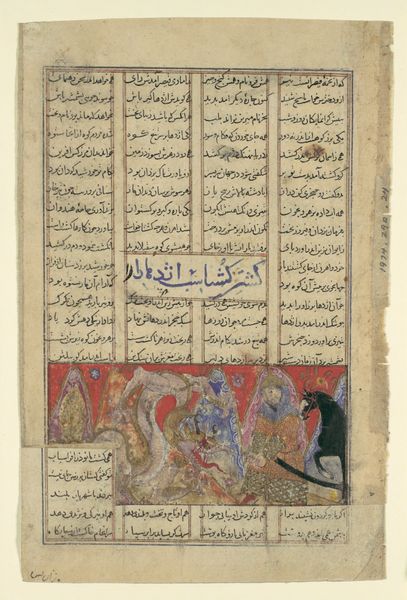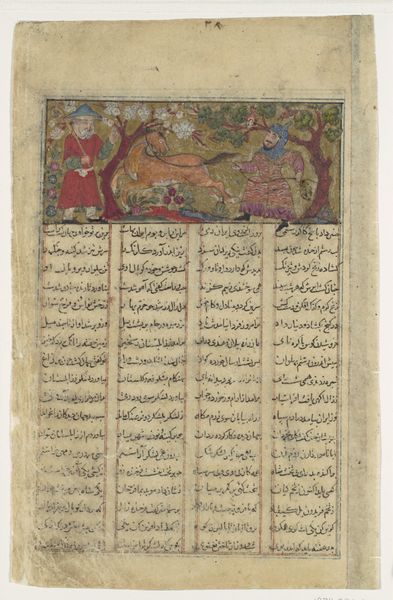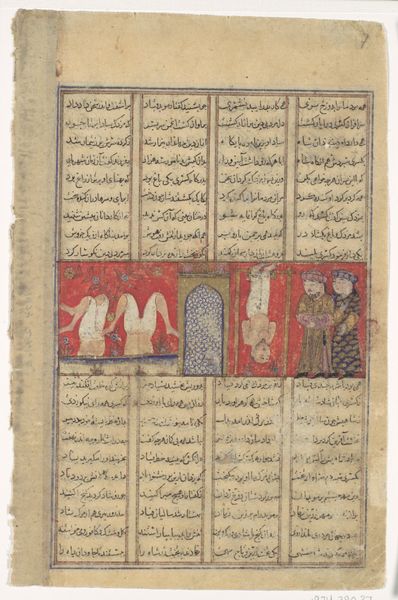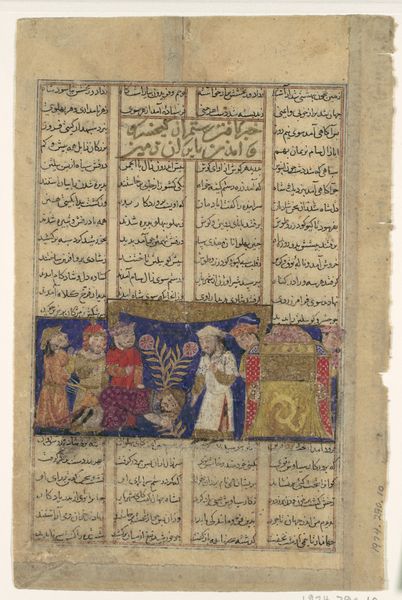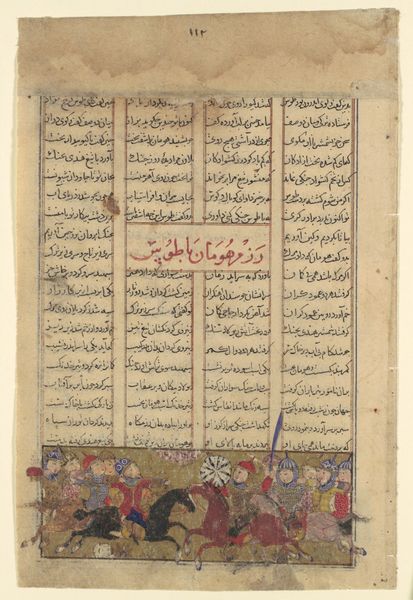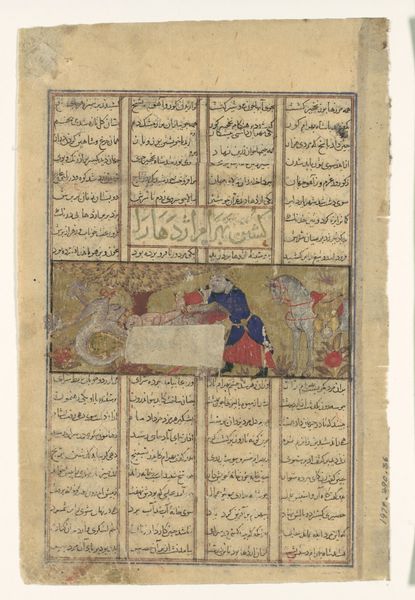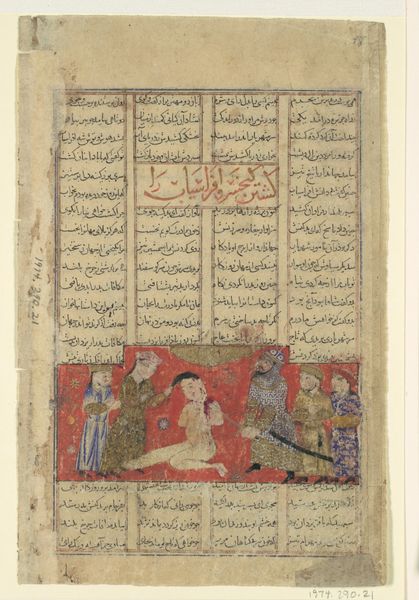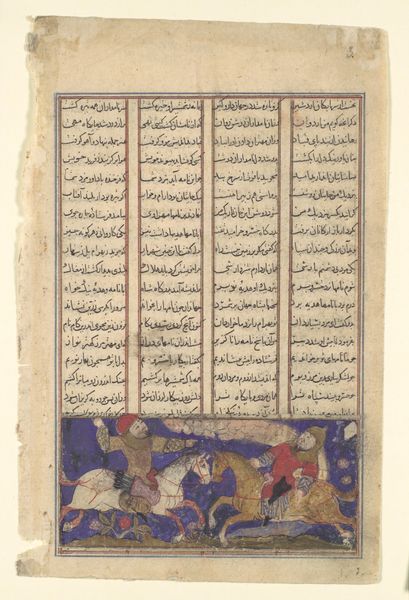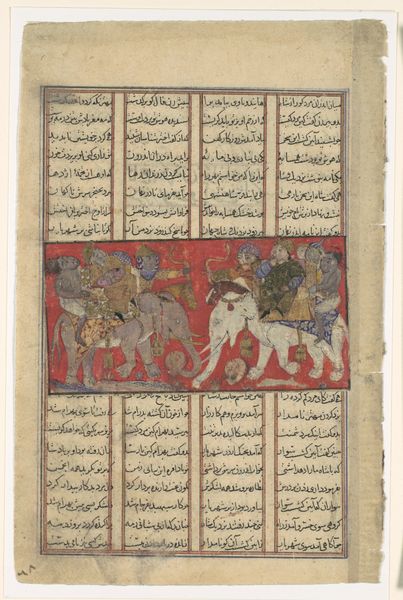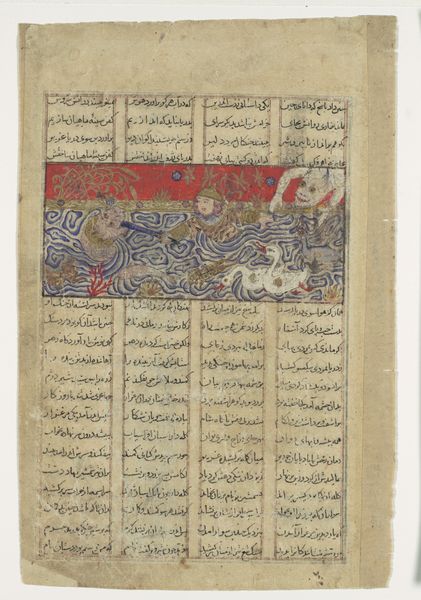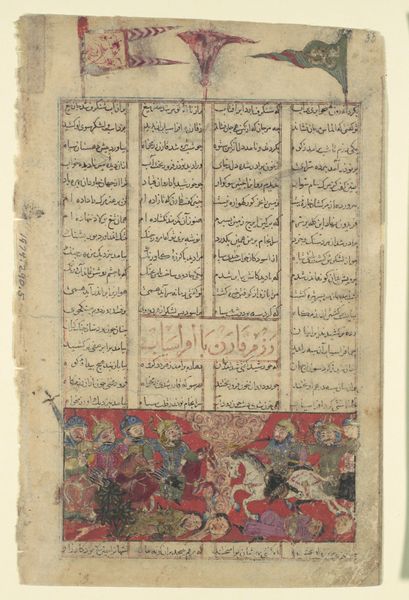
"Khizr Comes to the Ascetic's Cell", Folio from a Khamsa (Quintet) of Amir Khusrau Dihlavi 1425 - 1475
0:00
0:00
painting, watercolor
#
water colours
#
narrative-art
#
painting
#
figuration
#
watercolor
#
coloured pencil
#
islamic-art
#
miniature
Dimensions: Page: H. 13 1/2 in. (34.3 cm) W. 10 1/4 in. (26 cm) Painting: H. 3 3/4 in. (9.5 cm) W. 8 1/16 in. (20.5 cm)
Copyright: Public Domain
Curator: Today we're looking at "'Khizr Comes to the Ascetic's Cell'," a folio from a Khamsa of Amir Khusrau Dihlavi, made sometime between 1425 and 1475. It's currently housed at the Metropolitan Museum of Art. Editor: Immediately, the division of space strikes me. Those bold blocks of color framing the figures have such a powerful presence, almost flattening the scene. Curator: Indeed. Let’s delve into the social context. The Khamsa is a collection of five long narrative poems, and paintings like this one, executed in watercolors, would have accompanied the text, creating a luxurious experience for the patron, a member of the elite. Editor: How does the meeting depicted reflect potential social relations? What do we know about the act of bestowing wisdom upon religious scholars, in miniature form? Curator: We can examine the role of narrative painting during that period. Courtly patronage significantly shaped the visual culture and politics of imagery in ways that also reinforced political authority and legitimized rulership through tales and elaborate art works, even works intended to promote self-reflection. Editor: But wouldn't you also agree that within that power structure, there's often room for subversion and negotiation? I think in Khizr's act, we see a challenge to any established order. This visit destabilizes ideas surrounding who belongs inside versus outside of the monastery, a place often designed for isolation from a changing world. Curator: The composition emphasizes that tension between stability and movement, doesn’t it? Those figures frozen in place, enclosed by these flat shapes of intense hues. But what is interesting, in that respect, is how Khizr destabilizes through the use of vertical composition, drawing the viewer’s gaze upwards through vertical arrangements. Editor: For me, the lasting impact stems from a challenge to established hierarchies that are based on cultural differences, whether implied or visible. Curator: Ultimately, art reminds us that engaging with history demands nuanced critical analysis, while, art historically, such pieces are central to our understanding of this particular time and place.
Comments
No comments
Be the first to comment and join the conversation on the ultimate creative platform.
